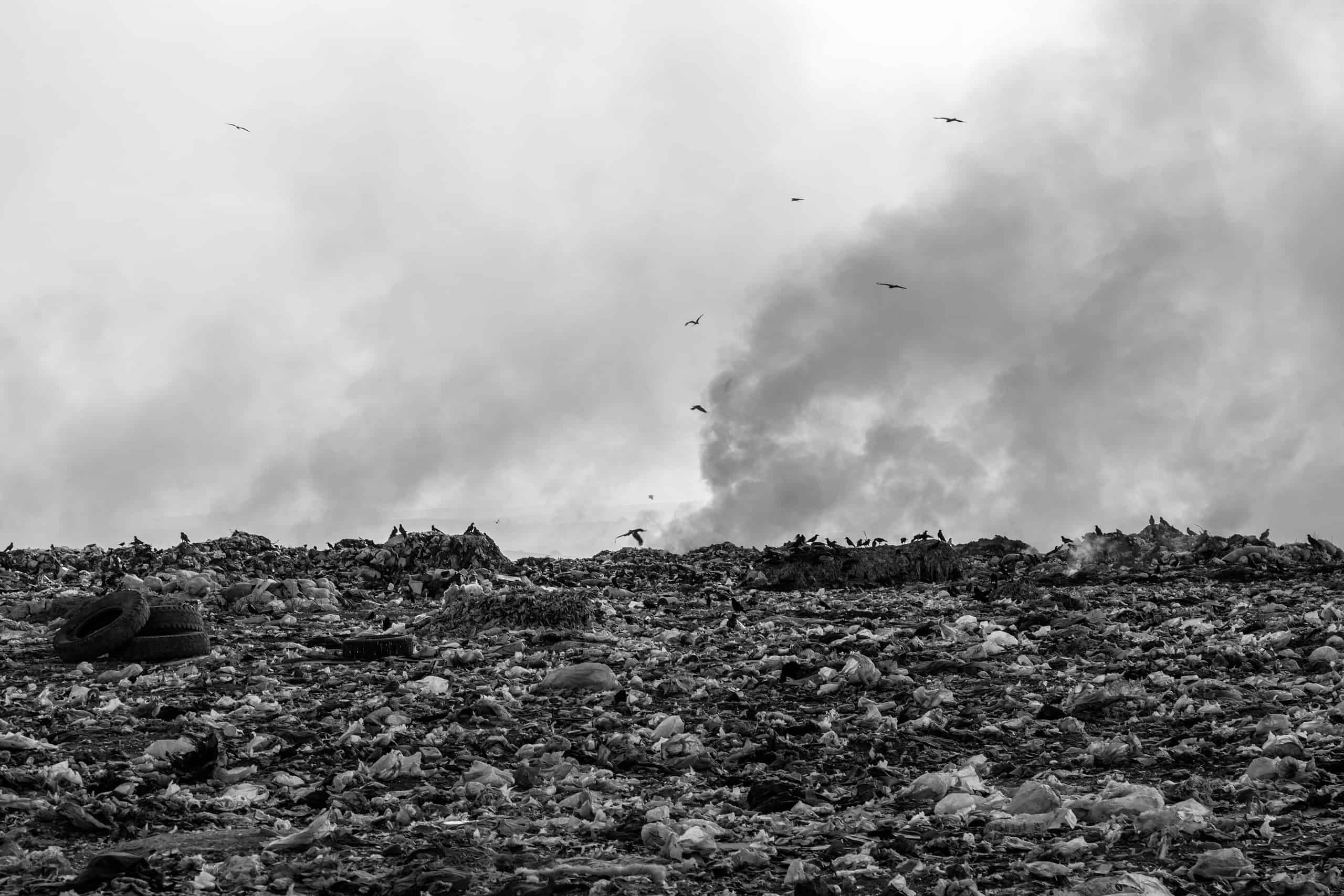Imagine a future where you no longer have to worry about gas leaks putting your family and neighbors in danger, causing harm to the environment, or hurting your business operations.
Instead, picture a world where detecting even the tiniest gas leaks was just another simple task that could be done quickly, safely, and efficiently – all thanks to the marvel of technology.
This futuristic vision may seem far-fetched, but the reality is that we are already closer than you might think.
Thanks to the fusion of cutting-edge optical gas imaging technology and the rapidly evolving world of drones, we can now detect gas leaks from a whole new perspective.
This transformational combination is poised to revolutionize how we approach gas leak detection.
This page will explore how these extraordinary flying machines make the world safer and cleaner, one gas leak at a time.
- Introduction to Gas Leak Detection with Optical Gas Imaging Drones
- Importance of Gas Leak Detection in Industrial Settings
- Challenges with Traditional Gas Leak Detection Methods
- What is Optical Gas Imaging?
- Benefits of Optical Gas Imaging Technology for Gas Leak Detection
- How do portable handheld OGI cameras improve gas leak detection?
- How does Optical Gas Imaging with a drone change gas leak detection?
- Which drones can be used to carry an optical gas imaging camera?
- What are some of the top OGI cameras?
- Which software do you need to manage your Optical gas imaging data?
- The Ultimate Gas Leak Detection Drone System
- How can you get started leveraging Optical Gas Imaging in your business?
- OGI – Best System of Emissions Reduction
Introduction to Gas Leak Detection with Optical Gas Imaging Drones
Welcome to the world of gas leak detection with Optical Gas Imaging (OGI) drones!
As a professional in the industry, you know how crucial it is to detect and monitor gas leaks in industrial settings.
With OGI cameras or sensors mounted on drones, you can safely and efficiently spot invisible industrial gases, such as methane and many other organic gases.
Optical Gas Imaging technology, combined with drone systems, provides a whole new level of effectiveness to this critical task.
To start in this innovative field, you must consider a few essential components: selecting the right OGI camera or sensor, finding compatible drone models to carry the imaging equipment, and choosing the right software to manage your collected data.
Handheld OGI cameras, such as the ICI Methane Mapper and FLIR G300a, offer portability and ease of use, while specially designed multi-sensor UAV payloads provide a bird’s eye view of hard-to-reach areas.
Incorporating OGI drone technology into your business will significantly increase the efficiency and safety of your gas leak detection efforts, ultimately protecting your workers, workplace, and environment.
Get ready to enter the future of gas leak detection with Optical Gas Imaging drones!
Importance of Gas Leak Detection in Industrial Settings
The importance of gas leak detection in industrial settings cannot be overstated.
Undetected gas leaks can lead to significant health hazards, environmental pollution, and business financial losses.
With the advent of new technologies such as optical gas imaging (OGI), the detection of gas leaks has become more efficient, cost-effective, and safer for workers.
According to a recent report published by Applied Sciences, drones equipped with OGI cameras have proven to be a game-changer for gas leak detection in industrial environments.
These highly advanced systems help you identify and monitor gas leaks but also help prevent potential accidents, save time, and lower operational costs.
One of the key advantages of using drone-enabled OGI cameras is that you can inspect large areas without putting workers at risk.
This revolutionary approach has made it easier for companies to comply with environmental regulations and maintain a safe working environment.
Traditional gas leak detection methods often fall short in accuracy and efficiency, but with OGI technology, these challenges are a thing of the past.
In conclusion, prioritizing gas leak detection in your industrial operations is crucial for your business’s safety, sustainability, and financial success.
By harnessing the power of OGI technology and drone systems, you can elevate your gas leak detection capabilities and make your facility a safer place to work.
Challenges with Traditional Gas Leak Detection Methods
Detecting gas leaks has always been an intricate and complicated task.
Traditional gas leak detection methods involve a variety of detectors, such as stationary, mobile, or handheld devices, which are used to monitor facilities and miles of pipelines for potential failures.
While these methods have proven beneficial, they often lack efficiency and expose workers to potentially hazardous environments.
As an industry professional, you might seek more advanced, safer alternatives to detect gas leaks. That’s where optical gas imaging (OGI) drones come in.
These cutting-edge devices are revolutionizing the way gas leaks are detected, preventing inspectors from trekking through miles of pipelines and wilderness and exposing themselves to potential danger.
Imagine using drones with cameras and sensors to accurately pinpoint leak locations, capture survey-level data, and provide detailed information on leak rates and gas types.
Not only will this innovative technology save your company time and money, but it will also contribute to environmental protection efforts.
It’s time to leave behind traditional, inefficient, risky gas leak detection methods. Instead, embrace the future of gas leak detection with optical gas imaging drones, ensuring the safety and efficiency of your operations while protecting the environment.
What is Optical Gas Imaging?
Optical Gas Imaging (OGI) is a cutting-edge technology that enables you to detect gas leaks with precision, speed, and safety.
Using OGI cameras, you can identify leaks of methane, sulfur hexafluoride, and hundreds of other industrial gases without shutting down your systems.
This innovative technology allows you to scan large equipment sections rapidly and inspect areas difficult to access with traditional contact measurement tools.
With Optical Gas Imaging, you can visualize invisible gases as clouds of smoke, allowing you to detect leaks from a safe distance.
As a result, you can avoid regulatory violations, fines, and lost revenue by scanning thousands of connections for natural gas and other hydrocarbons.
Additionally, OGI cameras can help protect your workers and the environment from toxic carbon monoxide, sulfur hexafluoride, and other hazardous gases.
Combining OGI technology with drones can revolutionize gas leak detection in your business.
Drones equipped with OGI cameras can reach high-voltage areas and inspect substations for sulfur hexafluoride leaks without shutting down operations.
Furthermore, Optical Gas Imaging can help you comply with EPA regulations, ensuring your business operates safely and efficiently.
Leverage the power of Optical Gas Imaging in your business to safeguard your employees, protect the environment, and maintain compliance with industry regulations.
Benefits of Optical Gas Imaging Technology for Gas Leak Detection
Optical Gas Imaging (OGI) technology provides numerous benefits for detecting gas leaks, ensuring a safer and more efficient work environment.
By utilizing state-of-the-art infrared technology, OGI cameras can accurately detect invisible emissions, helping to maintain a secure workplace and protect the surrounding environment.
One key advantage of OGI technology is its quick and precise detection of gas leaks, keeping workers safe from harm’s way.
In addition, with OGI integrated into drones, you can access hard-to-reach areas, such as offshore structures, granting you enhanced access to potential leak sites.
This technology also allows for night-time inspection thanks to its infrared capabilities.
Mining valuable data from OGI drones can help your business streamline processes and save on labor costs, as it lessens the need for manual inspections.
In addition, combining OGI technology and drones enables faster response times for identifying fault gases, ultimately improving overall safety and efficiency.
Moreover, drone-mounted OGI cameras offer increased inspection efficiency, allowing technicians to cover larger areas in a fraction of the time compared to handheld operation.
This approach saves time and money and ensures accurate and comprehensive data collection, drastically reducing the risk of overlooked issues.
In summary, harnessing the power of OGI technology in your business can significantly improve gas leak detection, enhance safety measures, and boost operational efficiency, all while reducing costs and minimizing risks to personnel.
How do portable handheld OGI cameras improve gas leak detection?
Portable handheld Optical Gas Imaging (OGI) cameras revolutionize gas leak detection, significantly improving efficiency and safety.
These cameras enable you to quickly scan broad sections of equipment and areas that may be difficult to assess with traditional contact measurement tools.
By detecting invisible gases such as methane, sulfur hexafluoride, and hundreds of other industrial gases, leaks can be seen as clouds of smoke, allowing for rapid identification and action.
When you use OGI cameras, you can quickly scan thousands of connections for natural gas (methane) and other hydrocarbon leaks, maintaining a safe distance to avoid potential regulatory violations, fines, and lost revenue.
FLIR optical gas imaging cameras are designed to help you find leaks quickly, with higher resolutions that allow you to see small gas leaks from a safe distance.
In addition to enhancing safety, OGI cameras help protect the environment by pinpointing carbon monoxide (CO) leaks or detecting leaks from hydrogen-cooled generators.
As a result, they can find early indications of potential issues, mitigate the risk of downtime, and reduce the environmental impact of hazardous gases.
Choose portable handheld OGI cameras to improve your gas leak detection process and ensure your team’s safety and your business’s ongoing success.
Investing in this technology will lead to greater efficiency, cost savings, and regulatory compliance in the long run.
How does Optical Gas Imaging with a drone change gas leak detection?
Optical Gas Imaging (OGI) combined with drone technology has revolutionized gas leak detection.
This innovative pairing provides a safer and more efficient method for monitoring vast areas of pipelines and other infrastructure.
Traditional “sniffers” for detecting leaks require operators to be near the source, posing significant health and safety risks.
By mounting OGI cameras or sensors on drones, operators can now detect gas leaks from a safe distance without guesswork.
One of the best examples of this technology is using FLIR G300a optical gas cameras paired with UAVs at the Al Hosn Shah Gas Processing Plant in Abu Dhabi.
With a cooled Indium Antimonide (InSb) detector, these cameras produce thermal images at a resolution of 320 x 240 pixels, allowing for accurate field monitoring from the air. In addition, drones enable operators to cover a broader area in less time, improving overall efficiency.
As a business owner looking to leverage Optical Gas Imaging, it’s essential to understand the software for managing the OGI data and the best drones for carrying an OGI camera.
By adopting this advanced technology, you can significantly enhance the safety and effectiveness of your gas leak detection efforts.
Which drones can be used to carry an optical gas imaging camera?
| Model | Manufacturer | Link | Description | Specifications | Pricing |
|---|---|---|---|---|---|
| Coaxial Octocopter Drone | Drone Assemble | Link | A drone with a 40-minute endurance and a maximum take-off weight of 15 kg. | Payload: 2.5 kg, Endurance: 40 minutes, Max Take-off Weight: 15 kg | $1,680 |
| Heavy Lift Drone FD1550 | Drone Assemble | Link | A hexacopter designed for multi-functional use with a maximum payload of 12 kg. | Payload: 12 kg, Frame Kit Included | $1,680 |
| Heavy Load Drone | Drone Assemble | Link | A drone capable of carrying a 40 kg payload with a 20-minute endurance. | Payload: 40 kg, Endurance: 20 minutes | $7,800 |
| Heavy Load VTOL | Drone Assemble | Link | A VTOL UAV with a load capacity of 55 kg. | Payload: 55 kg, Material: Carbon Fiber Composite, Engine: Petrol/Gasoline or Heavy Oil Engine, Take-off Weight: 100 kg | Not Listed |
| Hercules FDT100 | Drone Assemble | Link | A multipurpose heavy lift drone with a maximum payload of 70 kg and 45 minutes of endurance with a 10 kg payload. | Payload: 70 kg, Endurance: 45 minutes with 10 kg payload, Maximum Flight Speed: ≤ 25 m/s | Not Listed |
| Vector Hexacopter Drone | Vision Aerial | Link | A professional quality, heavy-duty hexacopter drone built and supported in the USA. Supports up to 11 lb (approx. 5 kg) payloads. | Payload: 5 kg (approx.), Features: Manual Mode, Brake Mode, Return to Launch, Autonomous Flight, Low Battery Protection, Lost Link Protection | Not Listed |
| Matrice 300 RTK | DJI | Link | DJI’s latest commercial drone platform takes inspiration from modern aviation systems. Offering up to 55 minutes of flight time, advanced AI capabilities, 6 Directional Sensing & Positioning, High-performance, real-time, and more. | Payload: Not specified, Max Transmission: 15 km, Max Flight Time: 55 minutes, Operating Temperature: -20°C to 50°C, IP45 Rating | $13,700 |
| Alta X | Freefly Systems | Link | A professional drone designed for heavy payloads and advanced flight control features. It is also foldable for easy transport. | Payload: 15.06 kg, Max Take-off Weight: 34.86 kg, Endurance: Not specified | From $18,200 |
In conclusion, by selecting a drone capable of carrying an optical gas imaging camera like the FLIR G300a, businesses can vastly improve their gas leak monitoring efficiency, reduce risks to human health, and protect the environment.
What are some of the top OGI cameras?
| Model | Manufacturer | Link | Description | Specifications | Handheld | Fixed Installation | Drone Mountable | Thermal Imaging | Optical Gas Imaging |
|---|---|---|---|---|---|---|---|---|---|
| FLIR GF320 | FLIR Systems | Link | The FLIR GF320 detects hydrocarbon and volatile organic compound (VOC) emissions from natural gas production and use. This optical gas imaging camera allows inspectors to check thousands of components and see potential gas leaks in real-time. | NETD: <10 mK @ +30°C (+86°F), Detector Pitch: 30 µm, Spectral Range: 3.2 – 3.4 µm | Yes | No | No | Yes | Yes |
| FLIR GF620 | FLIR Systems | Link | High-resolution, cooled optical gas imaging camera that visualizes methane, sulfur hexafluoride, and nitrous oxide. | IR Resolution: 640 × 480 (307,200 pixels), Detector Pitch: 15 μm, Spectral Range: 7.5 – 14 µm | Yes | No | No | Yes | Yes |
| FLIR G300a | FLIR Systems | Link | Optical gas imaging camera that performs methane detection and emissions measurement. | OOOOa certified Detector Type: Cooled Indium Antimonide, Detector Resolution: 320 × 256, Spectral Range: 2.3 – 3.5 µm | Yes | No | Yes | Yes | Yes |
| FLIR GF77 | FLIR Systems | Link | Uncooled optical gas imaging camera with interchangeable lens options that detect methane, sulfur hexafluoride (SF6), ethylene, ammonia, and other gas emissions. | IR Resolution: 320 × 240 (76,800 pixels), Detector Pitch: 12 μm, Spectral Range: 7.5 – 14 µm (LWIR); 3.9 – 4.8 µm (MWIR) | Yes | No | No | Yes | Yes |
| FLIR GF346 | FLIR Systems | Link | Optical Gas Imaging (OGI) camera for detecting carbon monoxide and nitrous oxide. | IR Resolution: 320 × 240 (76,800 pixels), Detector Pitch: 30 μm, Accuracy: ±1°C (±1.8°F) for temperature range 0°C to 100°C (32°F to 212°F) or ±2% of reading for temperature range >100°C (>212°F), Spectral Range: 4.52 µm to 4.67 µm | Yes | No | No | Yes | Yes |
| FLIR G620 | FLIR Systems | Link | Teledyne FLIR G Series High-performance camera for gas leak detection. | OOOOa certified Weight: Not specified, Sensitivity: <15 mK, Gas detection: 20+ hydrocarbon gases | Yes | No | No | Yes | Yes |
| FLIR Gx620 | FLIR Systems | Link | Teledyne FLIR G Series High-performance camera for gas leak detection. It is ATEX compliant, making these models ideal for detecting gas emissions in complex systems, including refineries, petrochemical facilities, natural gas well pads, compression stations, and power generation plants. | OOOOa certified Weight: Not specified, Sensitivity: <15 mK, Gas detection: 20+ hydrocarbon gases | Yes | No | No | Yes | Yes |
| FLIR GFx320 | FLIR Systems | Link | Intrinsically safe camera for gas leak detection. It is ATEX compliant. | OOOOa certified Weight: 1.5 kg, Sensitivity: <15 mK, Gas detection: Methane, VOC | Yes | No | No | Yes | Yes |
| FLIR GF304 | FLIR Systems | Link | Camera for refrigerant gas detection. | Weight: 1.5 kg, Sensitivity: <15 mK, Gas detection: Refrigerant gases | Yes | No | No | Yes | Yes |
| FLIR GF306 | FLIR Systems | Link | Camera for SF6 gas detection. | Weight: 1.5 kg, Sensitivity: <15 mK, Gas detection: SF6 | Yes | No | No | Yes | Yes |
| FLIR GF343 | FLIR Systems | Link | FLIR OGI camera for detecting carbon dioxide leaks. | Weight: 1.5 kg, Sensitivity: <15 mK, Gas detection: CO2, Detector Pitch: 30 µm, NETD: < 15 mK @ +30°C (+86°F), Spectral Range: 4.2 – 4.4 µm | Yes | No | No | Yes | Yes |
| FLIR GF77a | FLIR Systems | Link | Affordable, fixed-mount thermal camera. | Weight: 1.0 kg, Sensitivity: <40 mK, Gas detection: Methane, VOC | No | Yes | No | Yes | Yes |
| Ventus OGI | Sierra-Olympia Tech | Link | The Ventus OGI is an industry-leading, integration-ready 640 x 512 resolution MWIR camera core designed to detect and visualize hydrocarbon gases, including methane and propane. It is a high-performance, low SWaP package that is an invaluable tool for the oil and gas industry’s efforts to save time and money, increase efficiency, limit product loss, protect lives, and reduce environmental harm. | Detector Type: High Operating Temperature MWIR, Array Format: 640 x 512, Pixel Pitch: 15 microns, Spectral Response: MWIR, Frame Rate: 30 Hz, NETD: <50 mK, Analog Video Output: NTSC/PAL, Digital Video Output: Uncorrected 14-bit CameraLink, Digital Zoom / Pan: 2X, 4X, 8X, Camera control/Command Interfaces/System Control: Ethernet, Serial (RS-422/RS-232), Size (L x W x H): 147 x 71 x 73 mm (25 mm Lens), 138 x 71 x 77 mm (50 mm Lens), Weight: 541g (25 mm Lens), 570g (50 mm Lens), Input Voltage: 12VDC, Power Dissipation: 6W Typical, 12W Peak, Operating temperature: -35°C to +65°C, Mounting: 1/4-20 Tripod Mount, M3 tapped mounting holes, Certifications: Certified (<=60 g/hr), 25 mm Lens F#: 1.5, HFOVxVFOV: 21.7° x 17.5°, Focus: Thread Focus, 50 mm Lens F#: 1.5, HFOVxVFOV: 11.0° x 8.8°, Focus: Thread Focus | No | No | Yes | Yes | Yes |
| Precision Acoustic Imager II910 | Fluke | Link | High-precision acoustic imaging camera for locating high-frequency leaks. | Detector Pitch: 30 µm, NETD: < 15 mK @ +30°C (+86°F), Spectral Range: 4.2 – 4.4 µm | Yes | No | No | No | No |
| Sonic Industrial Imager II900 | Fluke | Link | Acoustic imaging camera that locates compressed air, gas, and vacuum leaks. | Detector Pitch: 30 µm, NETD: < 15 mK @ +30°C (+86°F), Spectral Range: 4.2 – 4.4 µm | Yes | No | No | No | No |
| Ti450 SF6 | Fluke | Link | Gas leak detector camera for identifying SF6 leaks in high voltage equipment. | Detector Pitch: 30 µm, NETD: < 15 mK @ +30°C (+86°F), Spectral Range: 4.2 – 4.4 µm | Yes | No | No | Yes | Yes |
All sensors are not equal.
They vary in their sensitivity, which in turn affects the gases they can identify optically.
They vary in weight which affects which drones they can be integrated on.
Finally, they have APIs that need to be considered if you will integrate the sensor with your drone and your enterprise systems.
Choose wisely, and the rewards are innumerable.
Which software do you need to manage your Optical gas imaging data?
- Choose the Right Software: To manage your optical gas imaging data, you need a software platform to handle the complex data captured by FLIR OGI cameras. Look for software compatible with the file formats used by FLIR optical gas imaging cameras, such as the Streamline App, or consider the FLIR Ignite cloud software.
- Integrate with Your UAV System: The Viper Vantage Ultimate Gas Leak Detection System is a comprehensive drone solution that pairs a FLIR G300a OGI camera with a top-of-the-line UAV system. This combination ensures seamless operation, so you can visualize and pinpoint gas leaks without shutting down operations.
- Harness the Power of HD Video: With the 15° lens and a high-definition video transmitter/receiver, you can monitor your operations in real-time, allowing quicker and more accurate leak detection.
- Utilize the Onboard PC: The Viper Vantage Solution, for example, has an onboard PC and power distribution system, making it easy to manage and store your optical gas imaging data.
- Comply with EPA Regulations: FLIR’s GF-Series and G-Series cameras have been third-party validated to comply with the EPA’s NSPS OOOOa methane sensitivity standards. Use enterprise solutions to track and report compliance.
Of course, your entire technology software stack must be integrated with your chosen drone management software. However, we won’t cover that here since you can read about these choices in our Comprehensive Guide to Drone Management Software Solutions.
The Ultimate Gas Leak Detection Drone System
We were so convinced of the value of drone-enabled OGI gas leak detection that we decided to build a demonstration model many years ago.
After several iterations, we introduced the Ultimate Gas Leak Detection Drone System: Viper Vantage, in 2019.
This state-of-the-art solution allows operators to visualize and pinpoint gas leaks without shutting down operations, ensuring environmental compliance, reducing revenue loss, and maintaining safety standards.
The Viper Vantage system is meticulously designed to integrate the highly sensitive FLIR G300a Optical Gas Imaging camera with a top-of-the-line commercial drone platform, creating the ultimate enterprise solution for gas leak detection.
Its Viperview control guarantees smooth and secure flying, while the InSb detector produces high-resolution thermal images, detecting even the smallest leaks.
The Viper Vantage consistently delivers the best results with distinctive features such as a 40mph max flight speed, a 16-minute maximum hovering time with payload, and an operating temperature ranging from -10°C to 40°C. In addition, the 320×240-pixel camera captures every detail of a leak, leaving nothing to chance, providing operators peace of mind.
We didn’t want to compromise when it comes to gas leak detection—our investment in the technology paid off.
Several clients invested in the Viper Vantage OGI Gas Leak Detection System – the ultimate blend of performance, reliability, and simplicity.
The solution worked and was definitive proof of the value of drone-enabled OGI. We still break out our Viper Vantage model to show a client how this works.
Today, we are pleased to work with several solutions capable of delivering many of the benefits of our benchmark solution.
We have open-sourced our design and happily share it with clients who want to build their own.
How can you get started leveraging Optical Gas Imaging in your business?
Starting with Optical Gas Imaging (OGI) in your business can significantly improve your gas leak detection and overall environmental health. To begin leveraging OGI technology, follow these simple steps:
- Know the regulations that govern compliance for your operations. Review Environmental Protection Agency (EPA) rules and best practice recommendations. Ensure you are familiar with and understand your local and state regulations.
- Identify the suitable emission threshold and type you will be required to measure – fugitive emissions, methane emissions, and other harmful gas emissions. The combination will determine the sensitivity required of your sensor.
- Understand the benefits: Before investing in OGI, it’s crucial to understand its advantages. OGI cameras allow for a safer, faster, and more efficient way of detecting various industrial gases, such as methane and sulfur hexafluoride.
- Choose the right OGI technology: Select a system that best suits your business needs. Options include handheld cameras, fixed-mount cameras, or multi-sensor UAV payloads. Companies like Teledyne FLIR and Infrared Cameras Inc. offer a range of OGI products for diverse applications. Ensure the sensor you use properly covers the spectrum of gasses you monitor.
- Train your staff: Once you’ve chosen a suitable OGI camera, ensure your employees are adequately trained in its use. This will guarantee maximum efficiency and safety during inspections.
- Implement OGI in your processes: Incorporate OGI into your routine inspections to improve the speed and accuracy of your gas leak detection, increasing safety for your workforce and protecting the environment from harmful emissions.
- Use the results to inform your leak repairs and preventive maintenance program. Follow the regulations for timely repairs of leaks you identify above the threshold levels you set for your compliance.
- Monitor and maintain: Continuously track your OGI camera’s performance, keep up with industry standards and regulations, and make adjustments as necessary to ensure ongoing efficiency and effectiveness.
- Roll all of these steps into a proper formal Leak Detection and Repair (LDAR) process.
OGI – Best System of Emissions Reduction
The EPA Best Practices group has determined OGI a BSER (Best System of Emissions Reduction).
*OGI is considered an EPA Best System of Emissions Reduction
You should read this…
-

Methane Detection Enters New Era with EPA-Approved Drone Method
Discover how drones equipped with methane detectors are transforming landfill inspections, improving efficiency and safety while reducing emissions.
-

Why Gas Leak Detection (LDAR) must continue to be a priority
For a while it seemed LDAR was no longer critical. Why are we so confident that LDAR remains critical and a priority for the energy industry and the world?
-

Leak Detection – Why Every Energy Executive Should Know This
The Secret About Leak Detection & LDAR – no longer just about compliance, but also a profit generator! Read on to find out what you are missing


